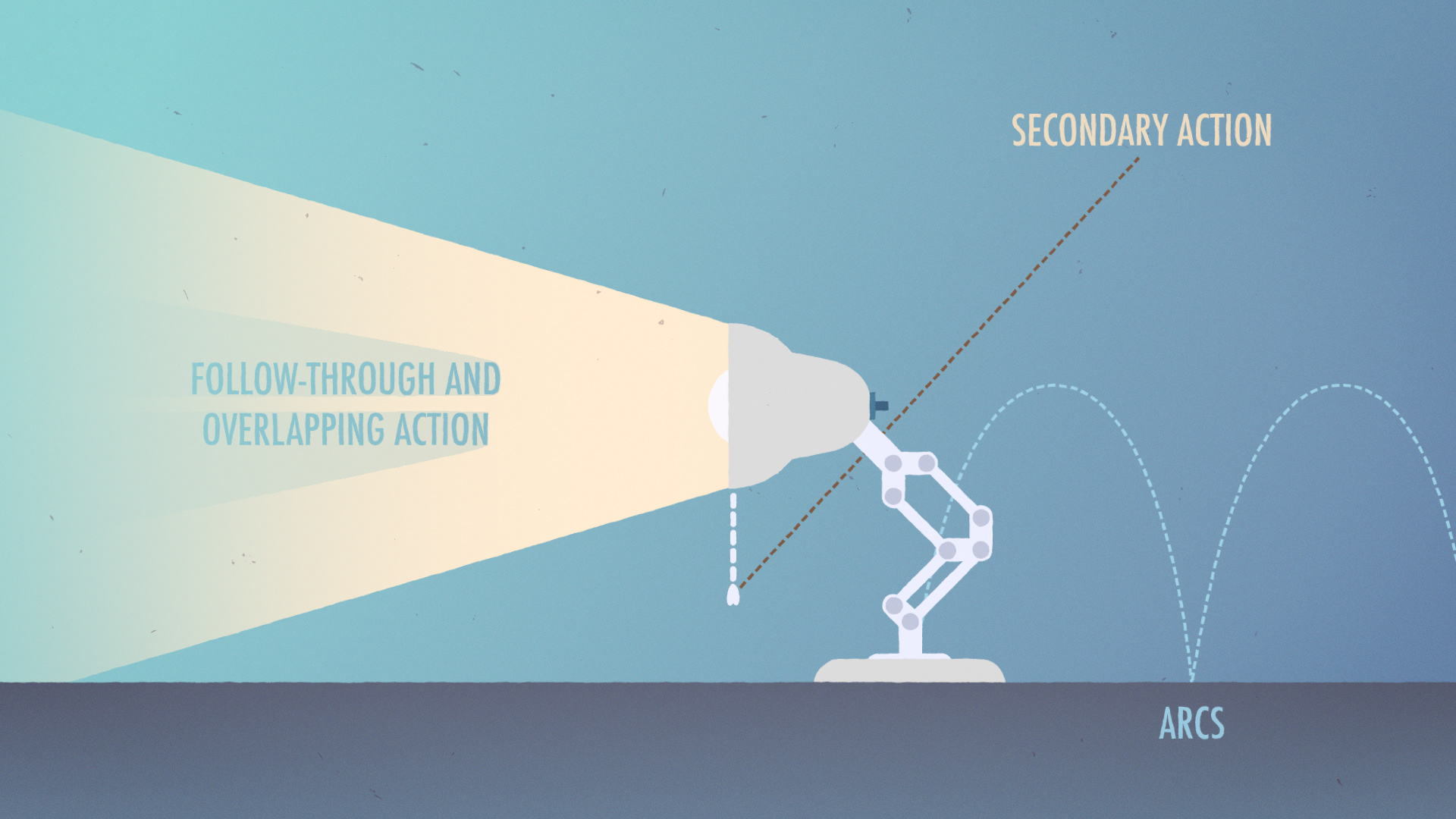This animation was created as an homage to the 12 Principles of Animation, and
to the excellent work of Pixar Animation Studios. Each one of the "principles" animation examples I designed is related in big and small ways to the various wonderful animations created by the talents at Pixar.
to the excellent work of Pixar Animation Studios. Each one of the "principles" animation examples I designed is related in big and small ways to the various wonderful animations created by the talents at Pixar.
The 12 basic principles of animation were developed during the 1930s by the “nine”; several of the classic keyframe animators of Walt Disney Studios, among them
Ward Kimball, Milt Kahl, Frank Thomas and Ollie Johnston.
Ward Kimball, Milt Kahl, Frank Thomas and Ollie Johnston.
These principles were the result of hard work and dedication from these artists and others inspired to bring life and meaning to their animated work. Later, several
of these men would take to teaching at CalArts, passing on what they discovered
and inspiring another generation of geniuses, including John Lassiter, Glen Keane,
and Brad Bird.
The Illusion of Life: Disney Animation was an autobiographical animation book published by Frank and Ollie in the early eighties (1981). This book was their account and understanding of the various techniques employed by Disney animators over the years to make the classics we’ve all come to know and love come alive on screen.
of these men would take to teaching at CalArts, passing on what they discovered
and inspiring another generation of geniuses, including John Lassiter, Glen Keane,
and Brad Bird.
The Illusion of Life: Disney Animation was an autobiographical animation book published by Frank and Ollie in the early eighties (1981). This book was their account and understanding of the various techniques employed by Disney animators over the years to make the classics we’ve all come to know and love come alive on screen.
The techniques from the book have been distilled down into the 12 principles
shown below:
shown below:
THE 12 BASIC PRINCIPLES OF PHYSICAL ANIMATION
1) Squash and Stretch
2) Anticipation
3) Staging
4) Straight-Ahead Action and Pose-to-Pose
5) Follow-through and Overlapping Action
6) Slow In and Slow Out
7) Arcs
8) Secondary Action
9) Timing
10) Exaggeration
11) Solid Drawing
12) Appeal
These principles were also adopted by Pixar as core principles and continue
to be stressed through their work to this day.
to be stressed through their work to this day.
For more information from the masters themselves, please check out:
http://frankanollie.com/
http://frankanollie.com/
The "Monsters Inc. Theme" was written by Randy Newman.
Also please check out the animation linked below, which inspired me to design this in the first place, by the very talented Vincenzo Lodigiani:
The Illusion of Life
The Illusion of Life
*I am not affiliated with Frank Thomas, Ollie Johnston, Walt Disney Studios or Pixar. This animation was created as an homage out of respect for the 12 Principles and their various creators and contributors.












The image above is based on the Pixar Basketball Court that is a part of their campus.
The image above is based on Andy's room from Toy Story, and Luxo Jr.'s ball.
The image above is based on Merida from the movie, Brave.
The image above is based on the Pixar Shorts: Knick Knack, Red's Dream and the Adventures of Andre and Wally Bee.
The image above is based on the Pixar Short, Luxo Jr.
The image above is based on Wheezy's blocks from the movie, Toy Story 2.
The image above is based on Peach from the movie, Finding Nemo.
The image above is based on Bloat from the movie, Finding Nemo.
The image above is based on EVE from the movie, WALL•E.
The image above is based on WALL•E from the movie, WALL•E.
The image above is based on Mike Wazowski from the movie, Monsters Inc.
The image above is based on Anger from the movie, Inside Out.